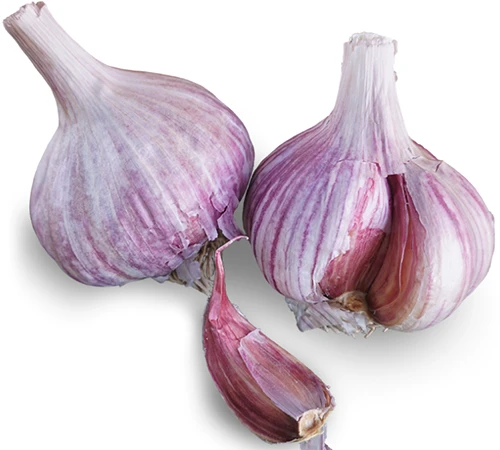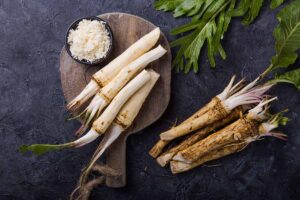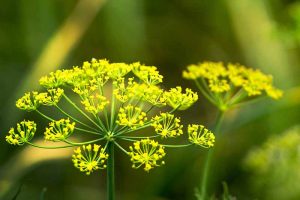I’ll never understand why garlic scapes aren’t more popular. Outside of the community of garlic growers, most people I talk to have never even heard of them!
Most grocery stores don’t sell them, though if you are lucky you may be able to find them seasonally at your local co-op or farmers market.
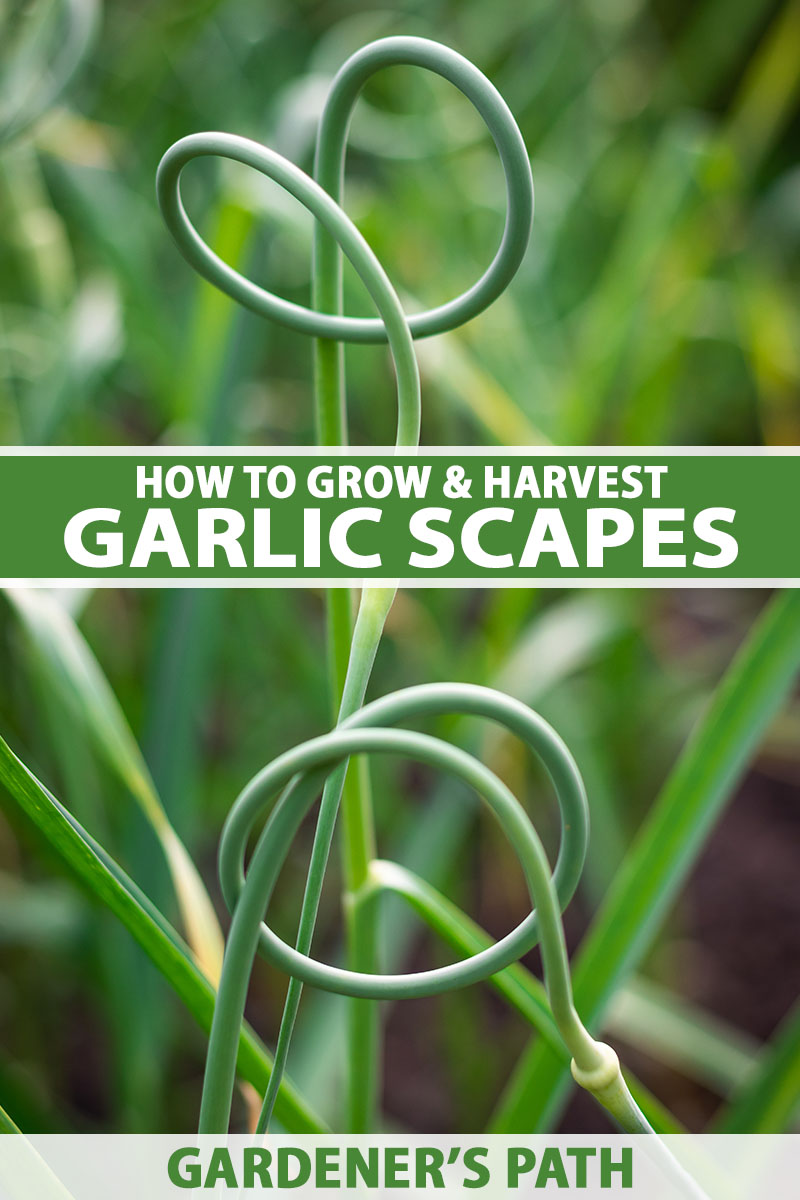
We link to vendors to help you find relevant products. If you buy from one of our links, we may earn a commission.
The truth is that these long, swirly green stems you see growing out of garlic plants in early summer are not only edible, they’re exceptionally delicious.
They have a mild garlicky flavor and can be eaten raw, cooked, or even pickled – my favorite.
What’s more, they are a natural part of the plant’s growing process and a cinch to harvest. Continue reading to learn all about growing, picking, and using garlic scapes.
What You’ll Learn
What Are Garlic Scapes?
Scapes form naturally as part of the reproductive cycle of hardneck garlic plants. Note that most softneck varieties do not form scapes.
These round, firm stalks shoot out from the center of the plant in early summer and are ready to harvest about a month or so before the bulbs.
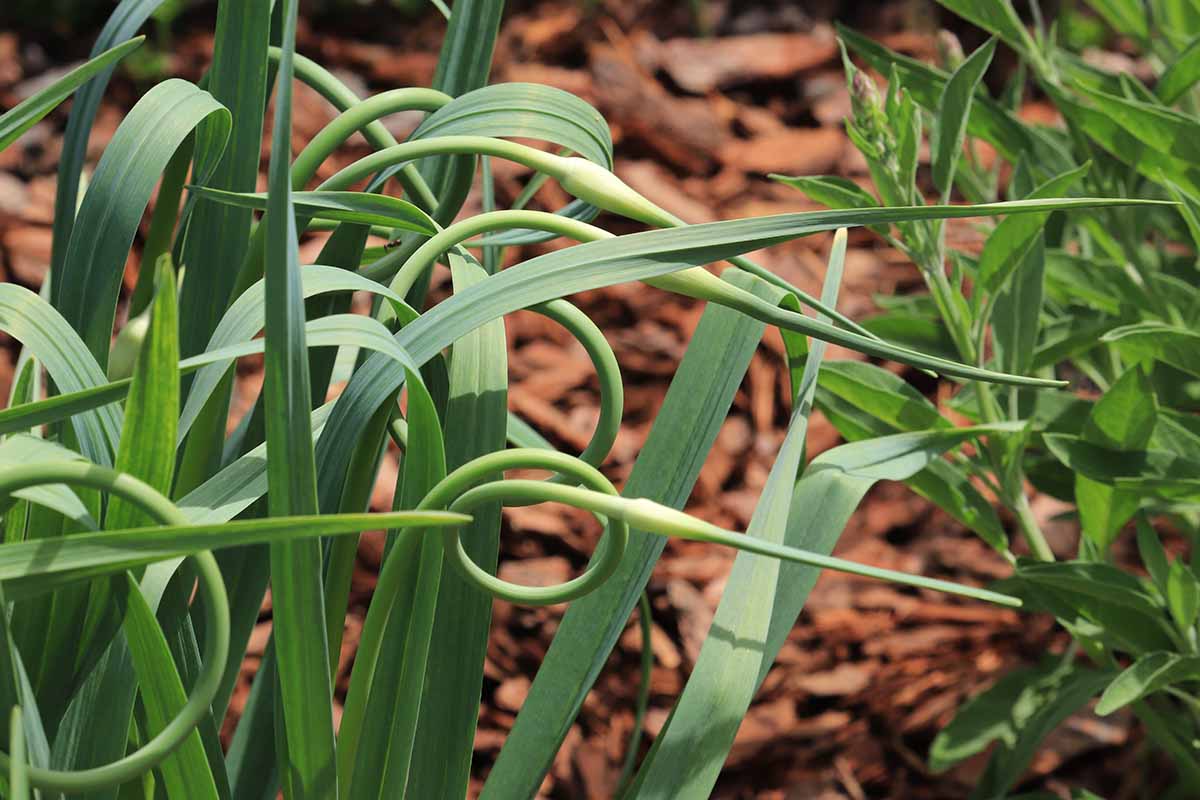
They grow above the height of the leaves, eventually curling around once or twice.
If you don’t remove them, they will first form a cluster of small flowers and eventually produce bulbils, which can be harvested later and propagated to form new plants.

Though it is possible to grow new plants from the bulbils, it takes much longer than sowing cloves, about two or three years from planting to harvest.
The flowers and bulbils are edible as well, though it would take quite a bit of effort to peel and cook enough of the tiny bulbils to flavor a dish.
How to Grow
If you are already planning to grow garlic, you don’t need to do anything special to produce the tasty scapes as well.
It’s a two-for-one situation; grow healthy plants and you will wind up with long, beautiful scapes.

Check out this guide for everything you need to know to plant and grow a flourishing garlic crop.
Removing the scapes may even be good for the bulbs. Many gardeners believe doing so improves the main crop by redirecting energy to increasing the size of the bulb, and it doesn’t hurt that they are delicious.
And since they are ready several weeks before it is time to harvest the bulbs, you can increase your garlic season by a month or more!
Varieties to Select
Be sure to look for a hardneck variety (Allium sativum var. ophioscorodon) since softnecks don’t typically form scapes.
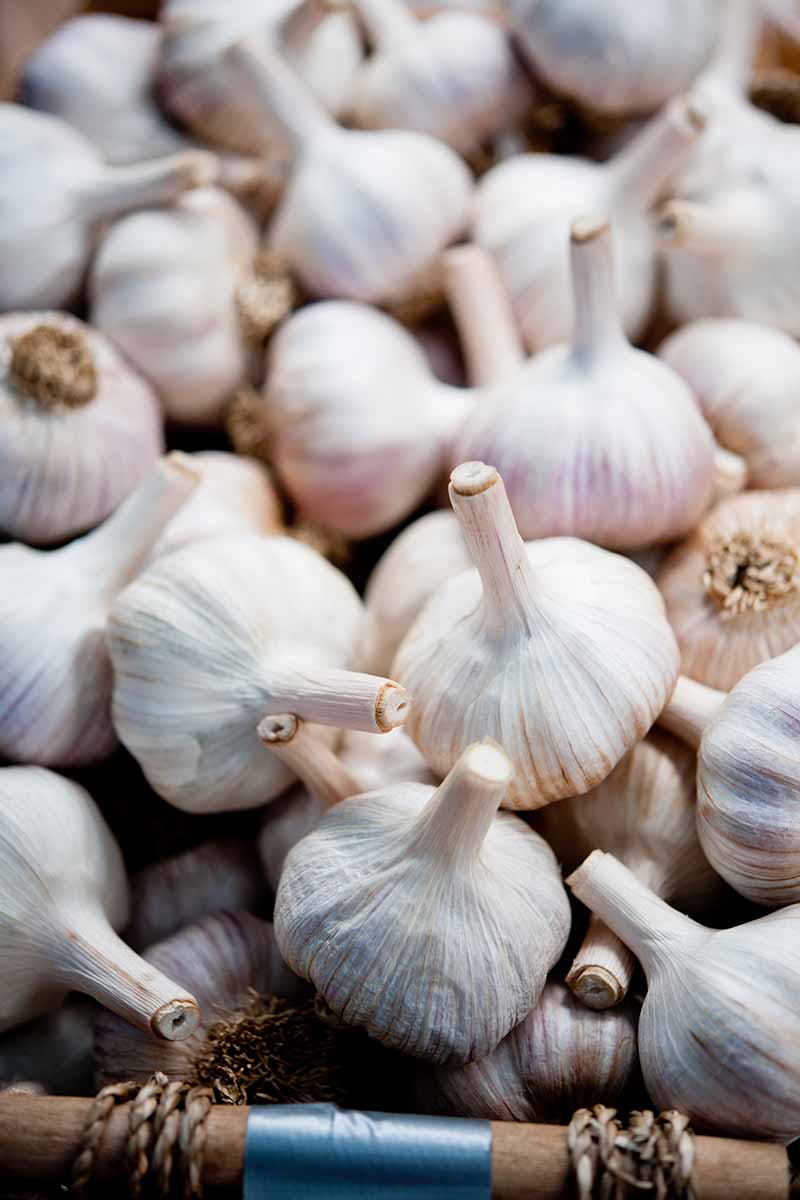
There are many varieties of hardnecks you can choose from, all of which will produce delicious scapes, so your best bet is to select whichever hardneck has the bulb type you most prefer.
There are other benefits to growing hardnecks as well.
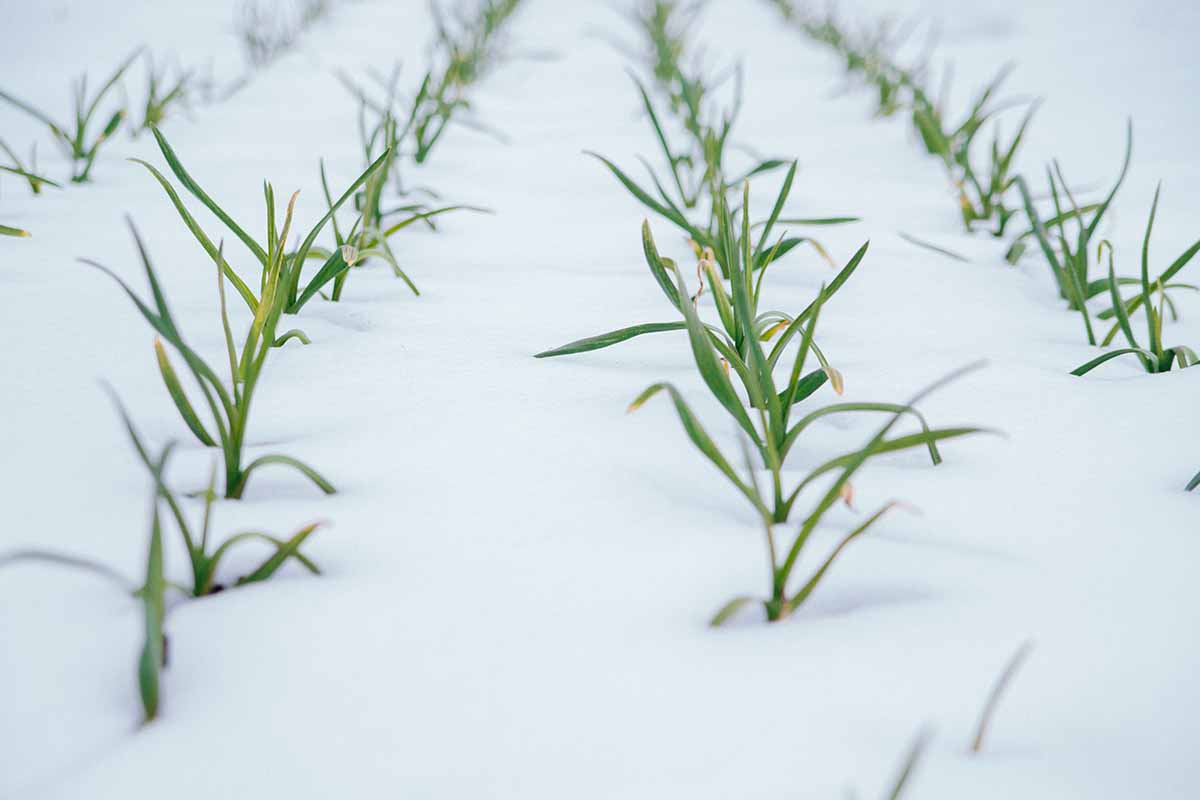
They tend to have larger, easier to peel cloves than softnecks and are often more flavorful too. They are also much more cold hardy and can be grown all the way down to USDA Zone 1.
‘Chesnok Red’ is a variety of hardneck with beautiful purple stripes, easy-peeling large cloves, and especially tender scapes.
You can purchase organic cloves for planting from Botanical Interests.
‘Music’ is another popular porcelain-type hardneck that produces large, spicy bulbs with a long storage capacity.
Porcelain types are a great choice in general as these hardnecks tend to feature large, flavorful, easy-to-peel cloves that store well for a long time.
‘Music’ cloves for planting are available from Botanical Interests.
Harvest Tips
Scapes are ready to harvest about a month before the main crop, typically sometime between mid-May and mid-June, depending on your growing zone.
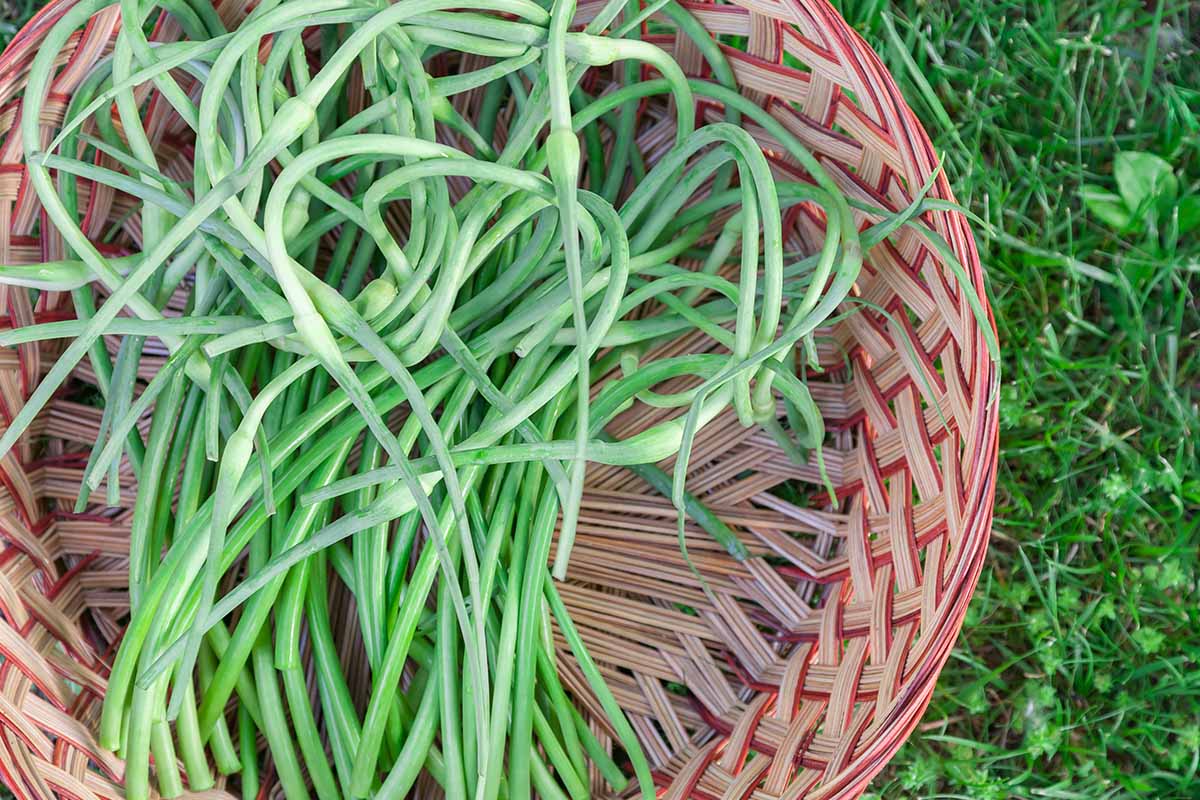
They are ready to pick once they have risen above the leaves and started to curl.
You can harvest just before or just after the first loop forms, but wait too long and they will start to toughen and become less palatable.
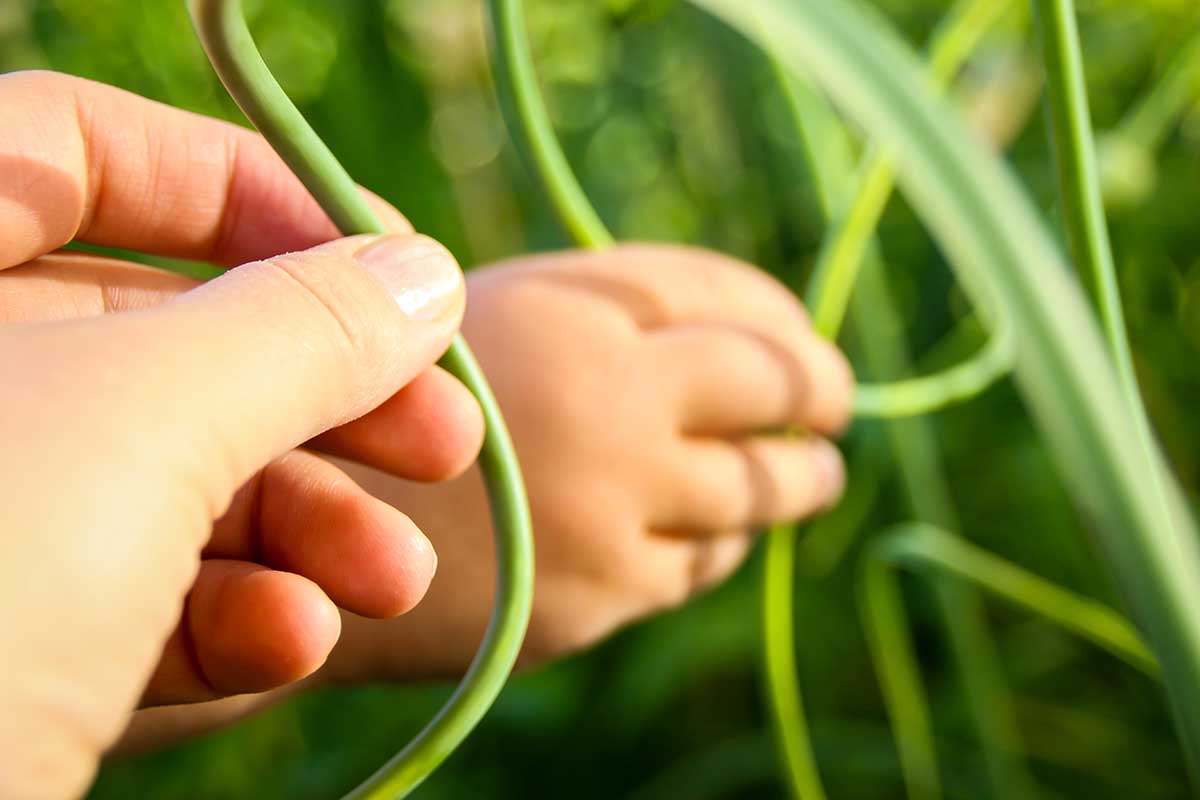
Harvest in the late morning when the weather is dry. Use a clean scissors or pruning shears to cut the stem as far down as you are able, being careful not to cut any of the leaves.
They may not all be ready at the same time, so be sure to make frequent trips to the garden over the course of a few weeks!
Storage and Preserving
Store them in the fridge until you are ready to use them. They should keep for up to three weeks if stored in an airtight zip-top bag.
Alternatively, you can keep them for a few days on the counter in a glass of cool water. Just make sure to change the water daily.
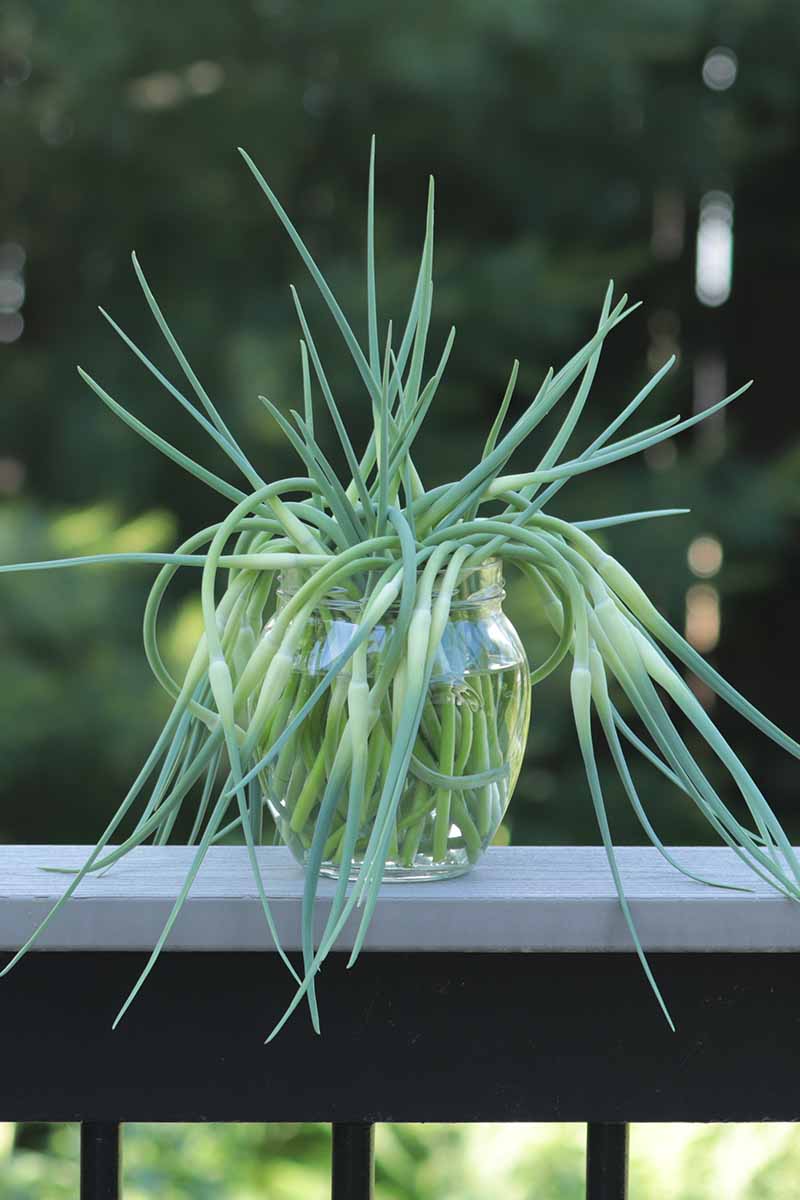
You can also freeze them for up to a year. Chop them up and freeze them raw.
To prevent clumping, spread them on a rimmed baking sheet and flash freeze first. After a couple of hours, move them to a freezer-safe container or bag for long term storage.
If you want to dry them, just chop them up into little pieces and place in a dehydrator for about eight hours. Once fully dried, you can store them in a sealed jar in your spice cabinet.
If you want to get more creative, you can also pickle them, ferment them, or use them to infuse oil or vinegar.
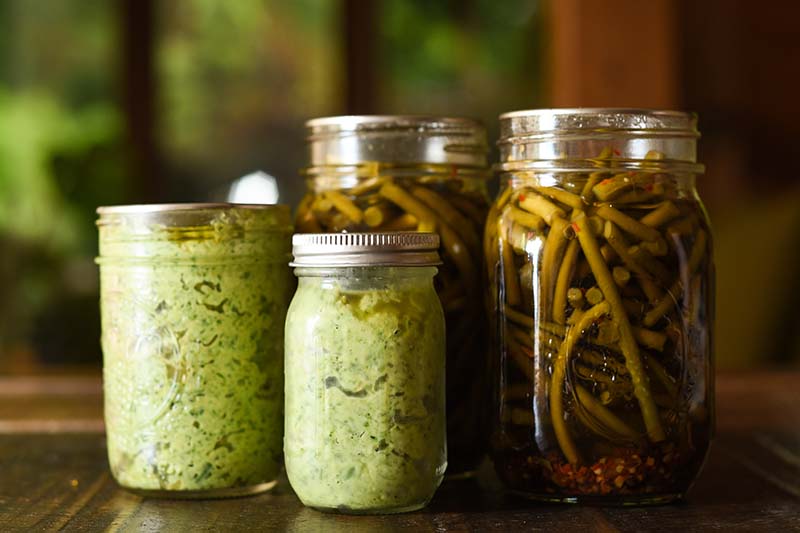
This summer at my farmers market stand I had several jars of pickled scapes for sale. Most people who came by had never heard of them, and I secretly hoped I wouldn’t sell many.
A family favorite, pickled scapes happen to be a frequent request of my three-year-old.
She has a unique palate for a toddler, but I’m right there with her on this one! They are particularly wonderful for pickling because they are so flavorful and maintain their crunch very well.
I love to pickle them in a white vinegar brine with dill and peppercorns, but you can use any pickling brine and spice combination you like.
If you need some inspiration, visit our sister site Foodal for some pickling ideas.
Cooking and Recipe Ideas
These long, swirly stems are seriously yummy. They taste just like the cloves, though a bit less spicy and a little grassy, somewhat like scallions or chives.
Just chop them up and cook them in any recipe that calls for garlic!

While the entire stem is edible, the flower bud on the end can be a bit tough, so you may choose to remove it prior to cooking.
A favorite of mine is to make pesto. This nutty, spicy sauce is perfect for summertime pasta or spread on a sandwich with tomatoes and mozzarella.
I usually make a big batch and freeze some in ice cube trays for when I want to spice up my winter.
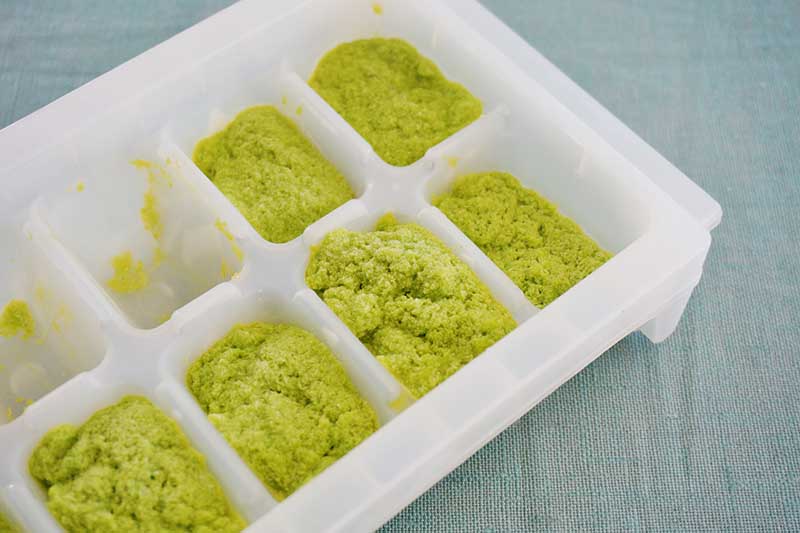
Check out this recipe on Foodal for delicious garlic scape pesto with parmesan and almonds.
For a quick and savory summery side dish, just replace the cloves with scapes in this recipe for garlic asparagus amandine, also on Foodal.
It’s perfect if you have asparagus shooting up in the garden at about the same time!
There are really an unlimited number of fun and creative ways to use them! Throw them in a stir fry, sprinkle on top of a pizza, or toss them in a soup.
You can’t really go wrong adding them to any dish! Or cook them on their own for a wonderfully flavorful side.
Double the Fun
Double your garlic crop this year by using the scapes! Easy to harvest and oh so tasty, there is really no excuse for letting them go to waste.
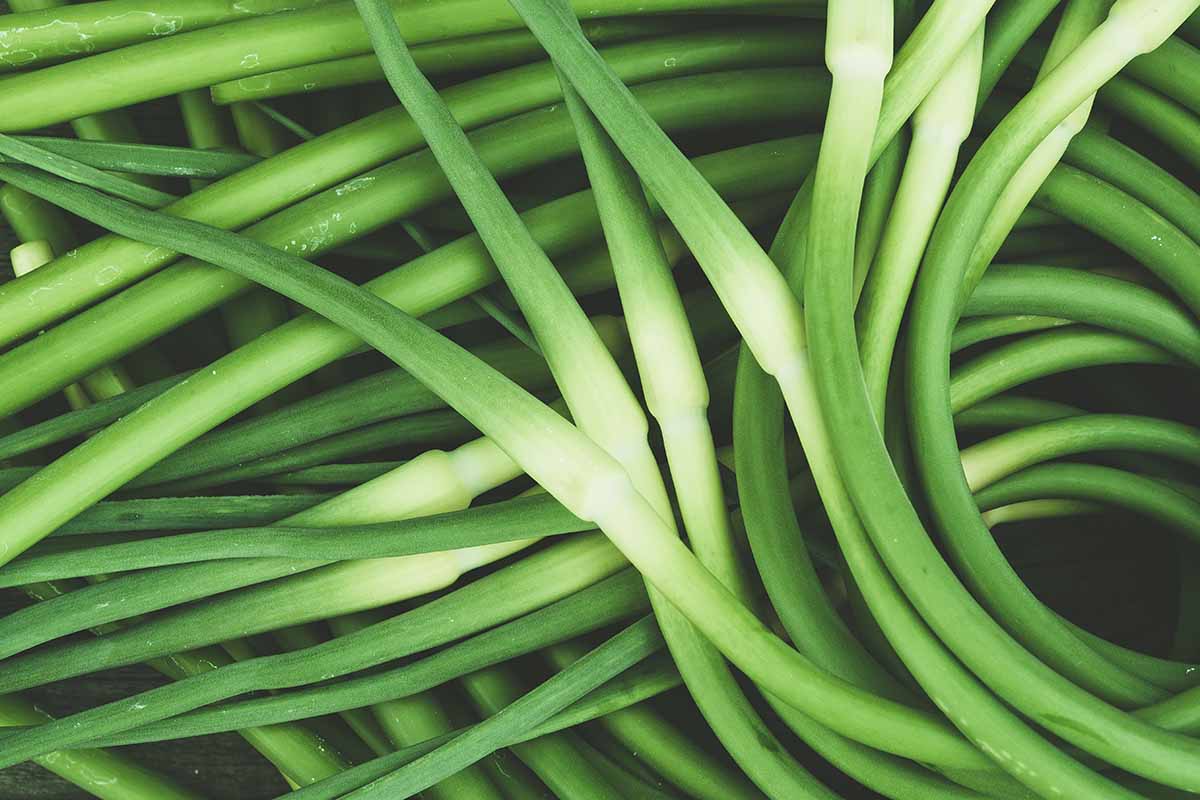
What are your favorite uses for scapes? We would love to hear about your recipes and tips in the comments below.
For more on growing and harvesting great garlic, check out these articles next:
